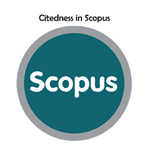Formulation and Antibacterial Potential Activity Test of Antiseptic Transparent Soap Preparations Srikaya Leaf (Annona squamosa L.)
Abstract
Keywords
Full Text:
PDFReferences
V. S. Dewangga and A. P. Nirwana, "UJI DAYA HAMBAT EKSTRAK ETANOL DAUN SRIKAYA (Annona squamosa L.) TERHADAP PERTUMBUHAN Staphylococcus aureus SECARA IN VITRO" Jurnal Kesehatan Kusuma Husada, pp. 50-56, 2019. https://doi.org/10.34035/jk.v10i1.328.
L. Sukeksi, M. Sianturi, and L. Setiawan, "Pembuatan sabun transparan berbasis minyak kelapa dengan penambahan ekstrak buah mengkudu (Morinda citrifolia) sebagai bahan antioksidan" Jurnal Teknik Kimia USU, vol. 7, no. 2, pp. 33-39, 2018. https://doi.org/10.32734/jtk.v7i2.1648.
J. Supriyanta, N. Rusdiana, and P. D. Kumala, "Formulasi Sediaan Sabun Padat Transparan Minyak Atsiri Daun Jeruk Limau (Citrus amblycarpa (Hassk) Ochse) Sebagai Antibakteri Terhadap Staphylococcus aureus" Jurnal Farmagazine, vol. 8, no. 1, pp. 8-16, 2021. http://dx.doi.org/10.47653/farm.v8i1.527.
S. A. Dimpudus, "Formulasi sediaan sabun cair antiseptik ekstrak etanol bunga pacar air (Impatiens balsamina L.) dan uji efektivitasnya terhadap bakteri Staphylococcus aureus secara In Vitro" Pharmacon, vol. 6, no. 3, 2017. https://doi.org/10.35799/pha.6.2017.16885.
F. Hamzah and M. T. Simbolon, "Pembuatan Sabun Transparan dengan Penambahan Ekstrak Batang Pepaya Sebagai Antibakteri" Chempublish Journal, vol. 3, no. 2, pp. 57-68, 2018. https://doi.org/10.22437/chp.v3i2.5713.
A. Marzuki, L. Rahman, and S. Kasim, "Development of lengkuas (Alpinia galanga) and cortex of banyuru (Pterospermum celebicum, miq) extract for topical preparation on validation methods analysis of total flavonoid levels" in Journal of Physics: Conference Series, 2019, vol. 1341, no. 7, p. 072017. http://dx.doi.org/10.1088/1742-6596/1341/7/072017.
A. Dwijayanti, "Uji Anti Bakteri Ekstrak Jahe Merah Pada Sabun Padat" Jurnal Ilmiah Teknik Kimia, vol. 4, no. 1, pp. 16-22, 2020. http://dx.doi.org/10.32493/jitk.v4i1.3799.
M. M. Susanti and S. Puspitaningtyas, "Analisis Karakteristik Mutu Sabun Transparan Bekatul Beras Merah (Oryza nivara) Berbahan Dasar Minyak Goreng Bekas" Jurnal Ilmu Farmasi dan Farmasi Klinik, vol. 16, no. 02, pp. 111-118, 2020. http://dx.doi.org/10.31942/jiffk.v16i02.3235.
F. Uzwatania, A. Ginantaka, and D. N. Hasanah, "Formulasi Sabun Mandi Transparan Halal Ekstrak Rosella dengan Dietanolamida sebagai Surfaktan" Jurnal Agroindustri Halal, vol. 6, no. 1, pp. 066-076, 2020. https://doi.org/10.30997/jah.v6i1.2627.
R. Dewi, E. Anwar, and Y. KS, "Uji stabilitas fisik formula krim yang mengandung ekstrak kacang kedelai (Glycine max)" Pharmaceutical Sciences and Research, vol. 1, no. 3, p. 5, 2014. https://doi.org/10.7454/psr.v1i3.3484.
F. Fatimah and J. Jamilah, "Pembuatan Sabun Padat Madu dengan Penambahan Ekstrak Kunyit (Curcuma domestica)" Jurnal Teknologi Agro-Industri, vol. 5, no. 2, pp. 90-100, 2018. https://doi.org/10.34128/jtai.v5i2.74.
P. A. Prasetiyo, L. Hutagaol, and L. Luziana, "Formulasi Sabun Padat Transparan dari Minyak Inti Sawit" Jurnal Jamu Indonesia, vol. 5, no. 2, pp. 39-44, 2020. https://doi.org/10.29244/jji.v5i2.159.
A. Widyasanti, C. L. Farddani, and D. Rohdiana, "Pembuatan sabun padat transparan menggunakan minyak kelapa sawit (palm oil) dengan penambahan bahan aktif ekstrak teh putih (camellia sinensis)" Jurnal Teknik Pertanian Lampung (Journal of Agricultural Engineering), vol. 5, no. 3, 2017.
S. Wahyuni, "Formulasi dan Uji Aktivitas Antibakteri Sabun Padat Transparan Ekstrak Lengkuas (Alpinia galanga (L.) Willd.) dan Ektrak Kulit Batang Banyuru (Pterospermum celebicum Miq.) terhadap Bakteri Gram Positif dan Bakteri Gram Negatif [Skripsi]" Makassar: Program Studi Farmasi. Universitas Hasanuddin, 2018.
I. Isramilda, S. Sahreni, and A. I. Saputra, "Uji Konsentrasi Daya Hambat Rebusan Daun Srikaya (Annona squamosa L.) Terhadap Pertumbuhan Staphylococcus aureus" BEST Journal (Biology Education, Sains and Technology), vol. 3, no. 1, pp. 01-08, 2020. https://doi.org/10.30743/best.v3i1.2378.
A. Y. Tansil, E. Nangoy, J. Posangi, and R. A. Bara, "Uji daya hambat ekstrak etanol daun srikaya (Annona squamosa) terhadap pertumbuhan bakteri Escherichia coli dan Staphylococcus aureus" e-Biomedik, vol. 4, no. 2, 2016. https://doi.org/10.35790/ebm.v4i2.14344.
DOI: https://doi.org/10.37311/ijpe.v2i3.15658
Refbacks
- There are currently no refbacks.
Copyright (c) 2022 Ari Dwidayati, Muhammad Asri, Adinda Putri, Nurfitria Junita

Indonesian Journal of Pharmaceutical Education is licensed under a Creative Commons Attribution-NonCommercial-ShareAlike 4.0 International License.



